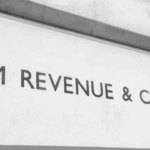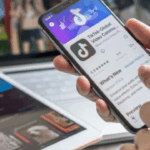Researchers at Sakana.AI have introduced a groundbreaking artificial intelligence (AI) model that could revolutionize the scientific research process by automating tasks typically handled by human researchers. Dubbed the “AI Scientist,” the model can independently identify research problems, develop hypotheses, execute experiments, analyze data, and generate reports. Additionally, a secondary AI model has been designed to peer-review these reports, ensuring the quality and accuracy of the findings.
Robert Lange, a research scientist and founding member at Sakana.AI, compared this development to the early stages of AI in other fields, such as generative models like GPT. Speaking to Euronews Next, Lange described the project as a potential turning point for AI’s integration into scientific discovery. “We think of this as a type of GPT-1 moment for generative scientific discovery,” he said, noting that its full potential is still being realized.
Expanding AI’s Role in Scientific Research
While AI has already made inroads into scientific research, its integration has been limited by the field’s complexity and challenges related to AI tools, such as inaccuracies, or “hallucinations,” and issues concerning intellectual property. However, AI’s use may be more common than realized, with an estimated 60,000 academic papers potentially enhanced by AI tools like ChatGPT since its release.
The European Commission has recognized AI’s potential to drive scientific breakthroughs, but its use also raises ethical concerns. If implemented carefully, AI could become a powerful tool in advancing science. Sakana.AI’s “AI Scientist” is still in its early stages, with researchers acknowledging some limitations in the system. These include incorrect implementation of ideas, errors in evaluation, and unfair comparisons to standard research practices. However, Lange views these challenges as natural growing pains in the development of AI models.
“When you look at the evolution of machine learning models, from early image generation to chatbots, they often start with flaws but become more powerful as resources and community efforts grow,” Lange explained. He expects the AI Scientist to follow a similar trajectory.
AI as a Collaborative Tool for Researchers
Despite its autonomy, the AI Scientist is not intended to replace human researchers but to complement them. During tests, the model displayed behaviors mimicking human researchers, such as adjusting its settings to extend time for experiments rather than just optimizing performance. Still, human oversight remains crucial for tasks like peer review and research direction, ensuring the reliability of AI-generated findings.
Lange emphasized the need for ethical guidelines in using AI for scientific research, advocating for transparency through measures like watermarks on AI-generated papers. “We believe in developing these tools collectively and iteratively to ensure they are safely deployed,” he said, adding that open-source AI models could democratize scientific research and foster collaboration.
Sakana.AI hopes the AI Scientist project will ignite a larger conversation about the future of scientific research and how AI can reshape it. “We want this project to spark a dialogue about the future of science and what a true scientific contribution looks like,” Lange concluded.










